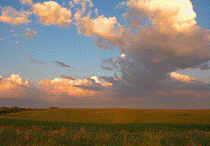North American Prairie Conference
Date of this Version
2004
Abstract
We examined the effect of white~tailed deer (Odocoiieus virginianus Zimmermann) browsing on community quality of tallgrass prairie forbs at a site in northeastern Illinois over a period of ten years (1992- 2001). Deer densities in the study area varied from 32- 50 km-2 (83- 130 deer mi-2) between 1992 and 1997 and declined to 7- 9 km-2 (18- 23 mi-2) following initiation of hunting. In a plot protected from deer browsing, abundances of browse-sensitive species increased and unpreferred and browse~tolerant species decreased. Community quality of forbs measured with a new index, Weighted Mean Fidelity, decreased on the unprotected plot until deer density was reduced. Several commonly used indices of floristic quality, mean C and floristic quality index, were unable to detect changes in community quality because the compliment of species on our site did not change over time. However, changes occurred in the relative abundances of species with different coefficients of conservatism, which was detected by Weighted Mean Fidelity. In contrast, on the protected plot community quality initially declined, followed by an increase, suggesting a lag time for recovery from browsing. Previous studies on our study site demonstrated that diversity of prairie forbs was maximized at an intermediate level of deer browsing, supporting the intermediate disturbance hypothesis, which posits that diversity is maximized at intermediate levels of disturbance. However, we found that community quality of forbs declined as duration of intense deer browsing (disturbance) increased, and was highest after eight years of protection from browsing, suggesting a potential trade-off between maximizing diversity and maintaining quality of forb communities that land managers should consider.


Comments
Published in Dave Egan & John A. Harrington, editors, Proceedings of the 19th North American Prairie Conference: The Conservation Legacy Lives On..., University of Wisconsin-Madison, August 8-12, 2004 (Proceedings of the North American Prairie Conference, 19), Madison, WI: University of Wisconsin-Madison, 2004.